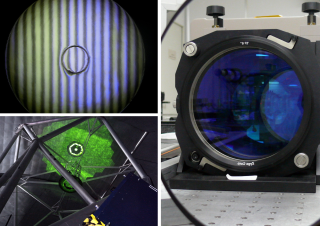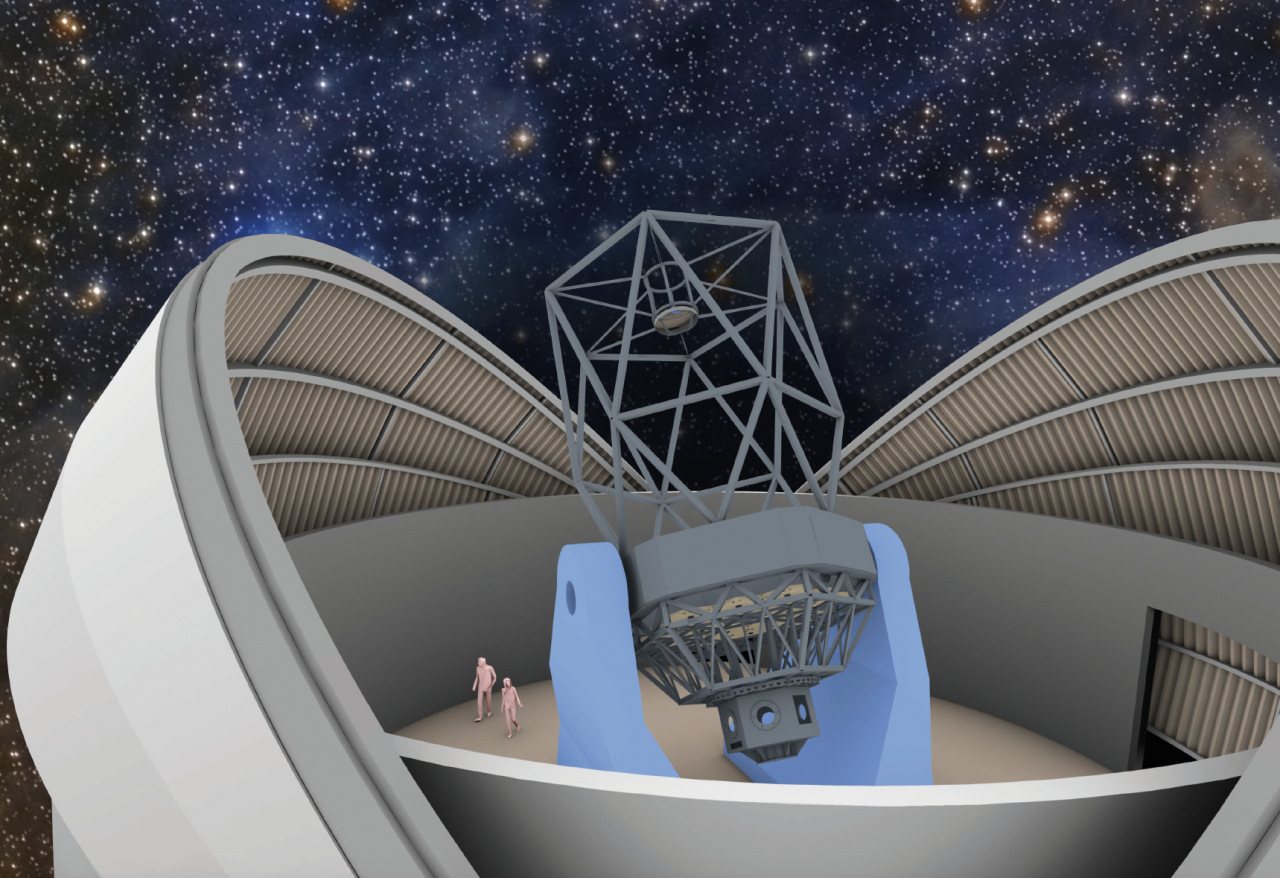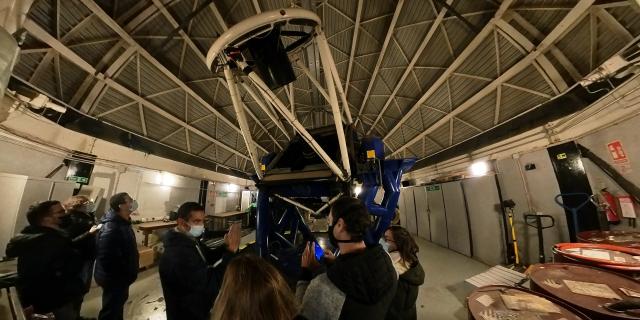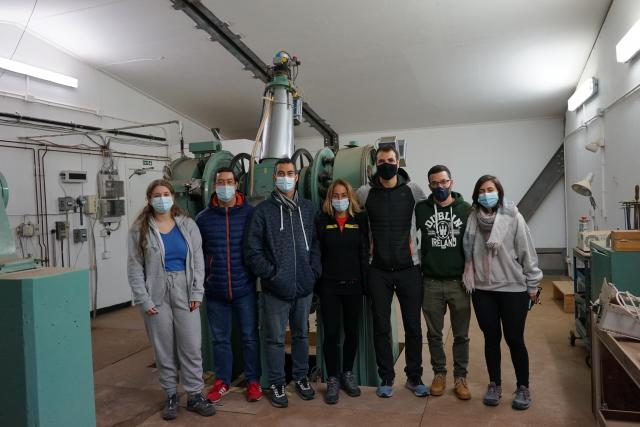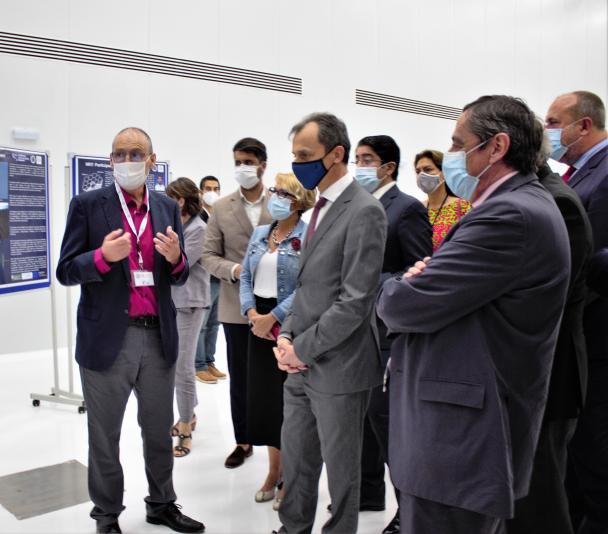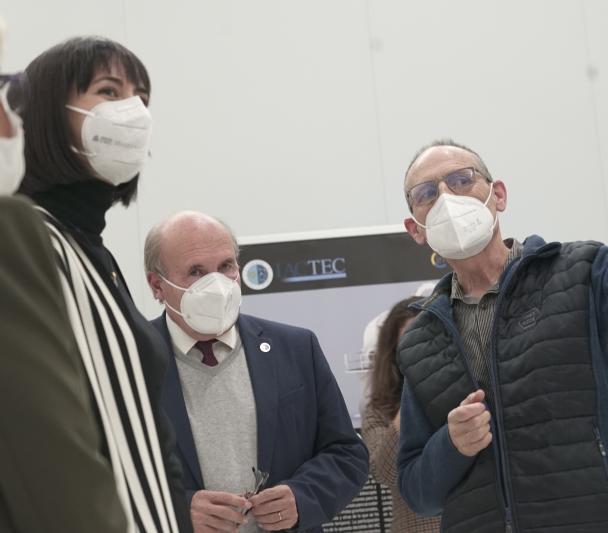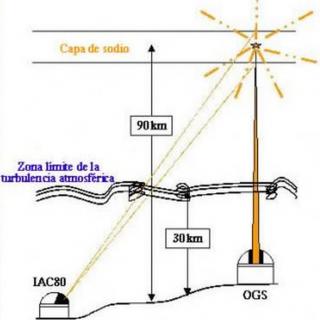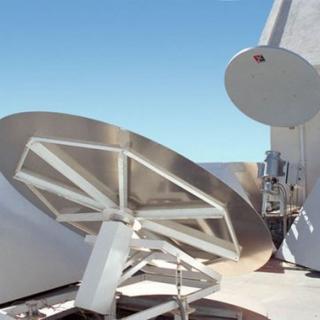Related grants:
General
The NRT (New Robotic Telescope) is a project to design and build the world's largest robotic telescope: a 4-meter diameter telescope that will operate completely autonomously to observe transient events that cannot be predicted and fade away in a short time.
Despite it's big size and weight, it will be a rapid-response telescope. When it receives an alert signal, it will be able to point to any area of the sky in less than 30 seconds.
The telescope will be located in one of the best astronomical observatories in the world, the Roque de los Muchachos Observatory, in the Canary Island of La Palma. Specifically in the place where the old Carlsberg Meridian Telescope is currently located.

All these factors will make NRT a key telescope for discoveries in Time Domain Astronomy. Even though the Universe may seem static, there are many processes taking place hidden from our sight. For example, there are gigantic explosions occuring all around us, releasing in a short time (from minutes to months) more energy than the Sun will release in its entire lifetime of 10 billion years. The NRT will be the ideal telescope to investigate these phenomena.
The University of Liverpool John Moores (LJMU), and the IAC are part of the consortium that is designing the telescope.
The project requires important technological advances in the areas of optics, mechanics, electronics, and software, particularly the development of a robust, reliable, and efficient control system. Currently, the team consists of specialized engineers in the areas of software, optics, and systems. This group works closely with teams from LJMU and the University of Oviedo from the IACTEC facilities.
The project is now moving into a new phase, starting with the critical design of the telescope and its instrumentation. Construction is expected to be completed within approximately five years.
The innovative nature of the project in several aspects aims to establish reference standards for future developments.
To learn more about the science and techonology of the New Robotic Telescope, visit the website: https://newrobotictelescope.org/

Members
Results
Technical visit to Roque de los Muchachos Observatory (ORM)
In April 2022, the NRT staff of the Institute of Astrophysics of Canary Islands went to the astronomical observatory in La Palma (ORM), to "stand on the shoulders of giants", as Newton would say.
The main goal was to get to know closely the software of the GTC, the biggest telescope in the world, in order to adapt it for the NRT, which will be the biggest robotic telescope in the world.
We were lucky to go through the "forbidden doors" of GTC, the backstage, like the mirrors' room, the electrical room or the room with the IT racks. And even more interesting: we learnt about the rights and wrongs that they encountered on the processes of building this titanic telescope and putting it to work. Some recommendations seem easy to follow and others not so much, for instance, we will have to imagine what technology will be like in 20 years so that the telescope can be easily updated as time goes by.
NRT IAC group at GTC telescope
GTC is not a robotic telescope, at night there are several operators working there, taking the decisions of what to observe and what to do if a problem with the telescope comes up. And they also decide when to close the telescope if the weather conditions get bad.
In the case of a robotic telescope these decisions are taken by an "artificial intelligence" of the telescope itself. For this kind of software, the NRT engineers will adapt the "artificial intelligence" of the Liverpool Telescope (LT), a robotic telescope of 2 meters diameter that has been operating at ORM for 15 years, and that we also had the opportunity to visit.
IAC NRT team at LT
Last but not least, we went to the site of the old Carlsberg Meridian Telescope. This is a telescope that it is no longer been used and that it will be taken to an astronomical museum. This is the site where NRT will be built, an example of astronomical recycling :-)
NRT IAC group at Carlsberg Meridian Telescope
Talks
- Title: Explore the Universe as a family with the NRT
Author: Alejandra Goded
Activity: Informative workshop aimed at families with children aged 6 to 12.
Location: Tenerife Museum of Science and Cosmos
Date: November 14, 2025
Scheduled during: Science and Innovation Weeks in the Canary Islands organized by ACIISI
https://www.facebook.com/share/p/17Yun2sFp6/
- Title: The telescopes we develop in the Canary Islands
Author: César Quintana
Activity: Informative talk
Location: IES Tías, Lanzarote
Date: November 15, 2024
Scheduled during: Science and Innovation Weeks in the Canary Islands organized by ACIISI
- Title: El futuro telescopio robótico NRT
Author: Miguel Ángel Torres Gil
Place: Online meeting with secondary level students, Tenerife, Spain
Date: June 10th 2021
- Title: The New 4-m robotic telescope and new concepts for future extremely large telescopes.
Author: Carlos M. Gutiérrez,
Place: Workshop Present and future of optical and infrared astronomy: synergies between China and Spain, Beijing (China)
Date: October 21st 2019
- Title: The 4 m New Robotic Telescope
Author: Carlos M. Gutiérrez
Place: Torremolinos (Málaga)
Date: September 30th 2019
- Title: Time Domain Astrophysics with Liverpool and New Robotic Telescopes
Author: Prof. Iain Steele,
Place: IAC Headquarters, La Laguna.
Date: September 18th 2019.
- Title: The 4 m New Robotic Telescope
Author: Carlos M. Gutiérrez
Place: Sixth Workshop on Robotic Autonomous Observatories, Facultad de Óptica y Optometría. UCM, Madrid
Date: March 1st 2019
Online Press
Title: El Roque acogerá el telescopio robótico más rápido y avanzado del mundo
Date: February 28th 2019. www.eldiario.es (LaPalma Ahora)
Multimedia
RTVCA News: http://www.rtvc.es/noticias/video-a-la-espera-del-telescopio-liverpool-2-191194.aspx#.XdP6aTJETUI
Scientific activity
Related publications
Related talks
-
Seminario de Instrumentación: Estado actual y retos del proyecto NRTEl IAC es uno de los socios principales en el proyecto NRT (New Robotic Telescope) para el diseño y construcción de un telescopio de 4 m robótico que estará ubicado en La Palma. El telescopio será un referente mundial en la caracterización de fenómenos astronómicos de naturaleza transitoria (supernovas, estallidos de rayos gamma, contrapartidas deCarlos ManuelGutiérrez de La Cruz
Aula
25 Mar 2022 - 11:00 Europe/LondonPastTalk Video -
The New Robotic Telescope and the Center for Advanced OpticsThe New Robotic Telescope (NRT) and the Center for Optics (CSOA) are two of the IAC's most ambitious technology initiatives for the next few years. On the one hand, NRT will be the most powerful robotic telescope in the world allowing the Spanish astrophysics community to play a leading role in the field of time domain astrophysics, while CSOA willCarlos ManuelGutiérrez de La Cruz11 Jun 2021 - 15:50 Europe/LondonPast
-
Time Domain Astrophysics with Liverpool and New Robotic TelescopesSince first light in 2004 the 2.0m Liverpool Telescope has been the world’s largest fully robotic telescope. It specialises in time domain astrophysics and has a dedicated instrument suite giving imagining, spectroscopic and polarimetric capabilities. In this seminar I will describe how the robotic operation of the telescope works and give examplesProf.Iain Steele
sala GTC
18 Sep 2019 - 12:30 Europe/LondonPast
News
